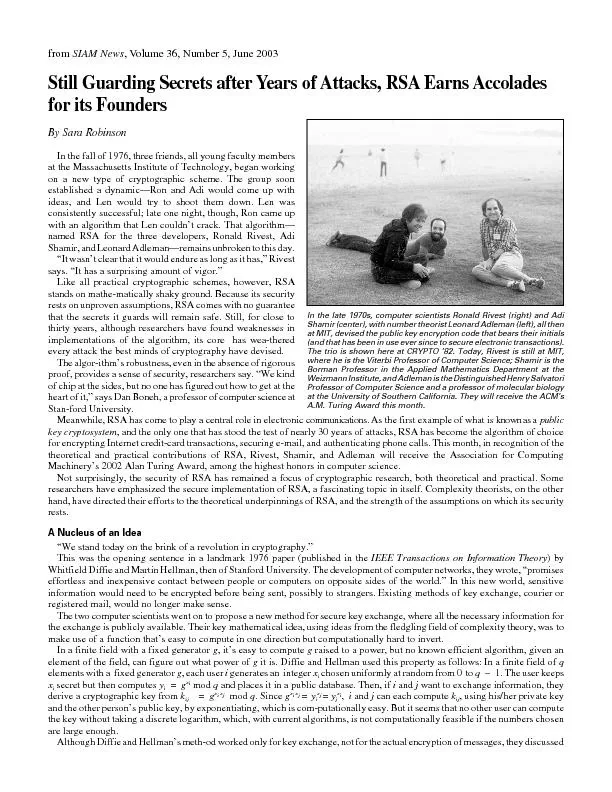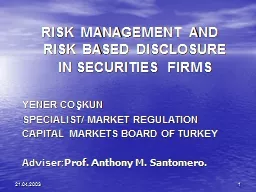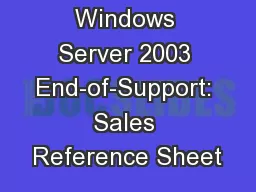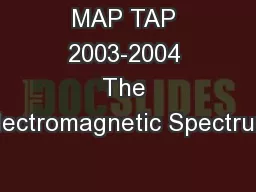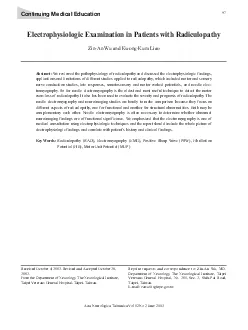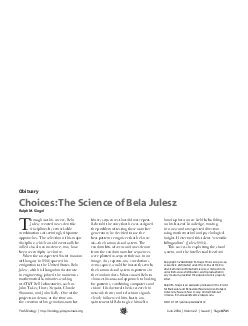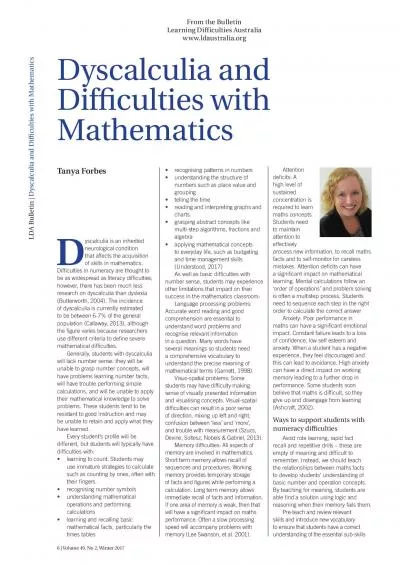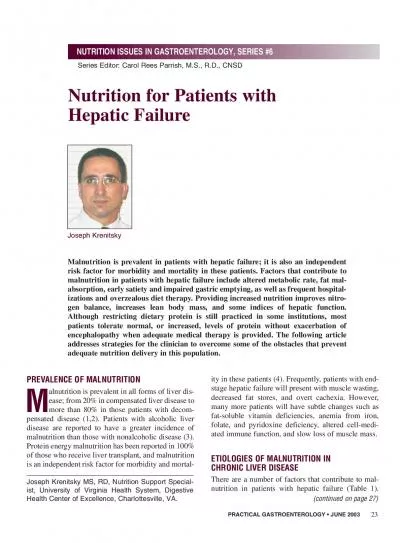PDF-, Volume 36, Number 5, June 2003
Author : olivia-moreira | Published Date : 2016-03-19
Still Guarding Secrets after Years of Attacks RSA Earns Accolades publicly is applied to a message to it The key so to speak to finding such a scheme they said
Presentation Embed Code
Download Presentation
Download Presentation The PPT/PDF document ", Volume 36, Number 5, June 2003" is the property of its rightful owner. Permission is granted to download and print the materials on this website for personal, non-commercial use only, and to display it on your personal computer provided you do not modify the materials and that you retain all copyright notices contained in the materials. By downloading content from our website, you accept the terms of this agreement.
, Volume 36, Number 5, June 2003: Transcript
Download Rules Of Document
", Volume 36, Number 5, June 2003"The content belongs to its owner. You may download and print it for personal use, without modification, and keep all copyright notices. By downloading, you agree to these terms.
Related Documents

